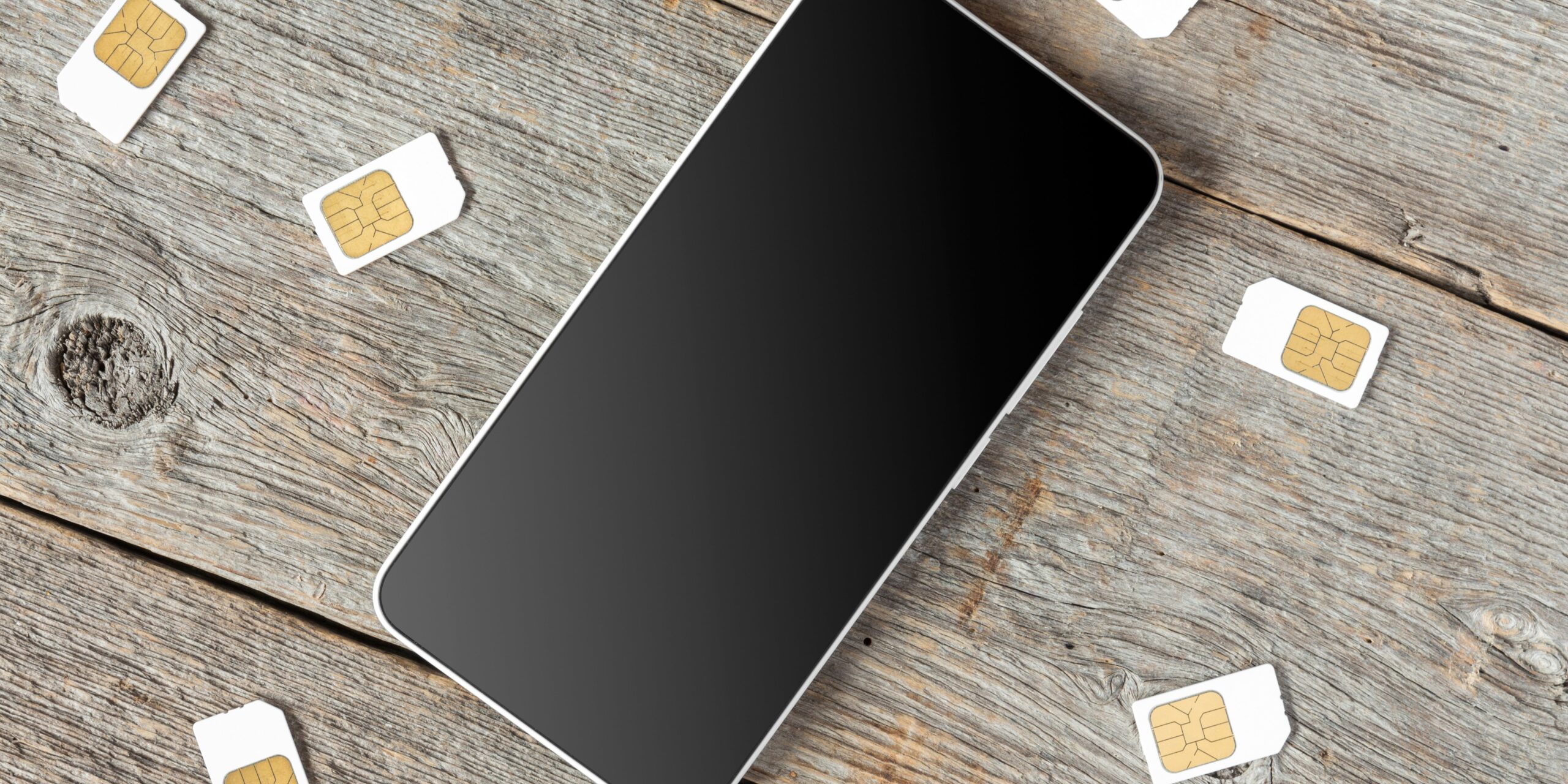
Imagine managing hundreds of connected devices spread across different countries, each needing a unique SIM card and activation process. Remote SIM Provisioning (RSP) has arrived, revolutionizing how we connect and manage devices in the ever-growing Cellular IoT (CIoT) landscape.
What is RSP? In essence, it’s the ability to remotely activate and manage a device’s SIM profile over the air, eliminating the need for physical SIM cards and manual interventions. This technology, enabled by GSMA’s Embedded SIM (eSIM) specification, uses secure communication protocols to deliver encrypted activation profiles directly to devices.
Why is RSP gaining traction in CIoT? The answer lies in its ability to address critical challenges faced in this sector:
However, challenges remain. Security concerns surrounding remote provisioning and managing multiple profiles require robust measures. Additionally, integrating RSP with existing systems and processes demands collaboration between technology providers and operators.
Despite these hurdles, the benefits of RSP for CIoT are undeniable. This technology allows seamless connectivity and efficient device management, from remote asset tracking to smart city sensors. As adoption accelerates, RSP is poised to unlock the full potential of Cellular IoT, shaping a future where connected devices operate seamlessly, securely, and cost-effectively, regardless of their location.
Remote SIM provisioning (RSP) is only possible with the magic of eUICC, which stands for Embedded Universal Integrated Circuit Chip. But what exactly is it, and how does it differ from the traditional SIM card?
This shift from physical to digital unlocks new levels of flexibility:
Now, let’s differentiate between consumer eSIMs found in smartphones and M2M eSIMs used in IoT devices:
While both leverage the same eUICC technology, their specific functionalities cater to distinct needs.
The future of connectivity hinges on this transformative technology. eUICC empowers consumers and businesses with incredible flexibility, security, and future-proofed scalability. As RSP and eUICC technology mature, we can expect even more exciting advancements, further blurring the lines between physical and digital worlds and ultimately shaping a genuinely seamless and connected future.
Imagine instantly activating a new network connection on your smart device without physically swapping a SIM card. eUICC, embedded within your device, makes this possible by enabling remote SIM profile changes.
Throughout this journey, eUICC plays a pivotal role:
However, integrating M2M eUICC requires careful consideration of specific challenges:
For IoT manufacturers and service providers, eSIM is more than just a technological shift; it’s a gateway to a transformed business landscape. Let’s dive into the key benefits it offers:
Cost-efficiency: Eliminating physical SIM cards translates to significant savings. Manufacturers benefit from reduced production, logistics, and inventory management costs. Service providers save on card distribution, activation fees, and international roaming charges.
Scalability: Remote provisioning opens doors to large-scale deployments without manual effort. Imagine activating thousands of sensors across different locations with a single click. This empowers rapid deployment and simplifies device management, regardless of geographical spread.
Flexibility: No longer locked to specific carriers, devices can dynamically switch based on location, coverage, or data needs. This flexibility optimizes costs and ensures reliable connectivity even in remote areas. Imagine smart cars seamlessly switching networks for optimal coverage during long journeys.
Future-Proofing with eSIM: As cellular technologies evolve from 2G to 5G and beyond, eSIMs ensure compatibility. Unlike traditional SIMs, they can be remotely updated with new network profiles, eliminating the need for hardware upgrades. This future-proofs devices and investments, protecting against technology obsolescence.
While eSIM boasts immense potential for the IoT landscape, challenges remain. Regulatory compliance, technical complexities, and cost considerations need careful navigation for smooth implementation.
On the regulatory front, achieving global adoption requires harmonization across different countries. Regions like Brazil and India have specific requirements. Law 12.965/13 in Brazil mandates data localization, impacting eSIM profile storage and access. The Telecom Regulatory Authority of India (TRAI) requires eSIM-ready devices to be registered on a central Equipment Identity Register (EIR), adding another layer of complexity.
Navigating these diverse mandates necessitates collaboration between device manufacturers, mobile network operators (MNOs), and regulatory bodies. Standardized protocols and interoperable platforms are crucial for simplifying compliance across borders.
Technical complexities come into play when migrating devices to new eSIM vendors. Vendors use varying profile structures and management tools, demanding adjustments and potential firmware updates. This process can be time-consuming and resource-intensive, especially for large-scale deployments.
Furthermore, cost considerations must be addressed. While eSIM eliminates physical cards, initial investments in infrastructure and integration can be significant. MNOs and manufacturers must weigh these upfront costs against the long-term benefits of scalability, flexibility, and reduced operational expenses.
Despite these challenges, industry efforts are focused on overcoming them. The GSMA, for instance, actively promotes global standardization and regulatory harmonization. Additionally, advancements in remote profile management tools and interoperable platforms are simplifying vendor migrations.
As the industry matures, cost structures are expected to become more favorable, with economies of scale driving down implementation costs. Moreover, the long-term cost savings associated with remote provisioning and flexible connectivity will likely outweigh initial investments.
In conclusion, addressing regulatory hurdles, technical complexities, and cost considerations is critical for the widespread adoption of eSIM in the IoT landscape. Collaborative efforts, standardized protocols, and innovative solutions pave the way for a future where eSIM unlocks its full potential, empowering a truly connected and efficient IoT ecosystem.
With its transformative potential, eSIM stands poised to revolutionize the landscape of IoT connectivity. Let’s peer into the crystal ball and envision what the future holds:
Growth of Remote SIM Provisioning: Predictions indicate an exponential rise in remote SIM provisioning (RSP) for IoT devices. Gartner estimates over 300 million eSIM-enabled IoT connections by 2025, highlighting the rapid adoption. Imagine effortless deployment and management of millions of connected devices, all thanks to RSP.
eSIM 2.0 and Beyond: The future doesn’t stop at basic functionalities. We can expect advancements like eSIM 2.0, incorporating multi-operator profiles for dynamic switching and optimized connectivity. Additionally, AI-powered intelligent eSIMs could manage data usage and anticipate future network needs, paving the way for hyper-efficient IoT operations.
Impact on IoT Connectivity: This evolving technology will dramatically reshape how devices connect:
Beyond these trends, eSIM’s impact could extend to emerging technologies like smart cities and connected vehicles. Imagine self-driving cars autonomously switching networks for optimal performance or intelligent city infrastructure flawlessly adjusting data usage based on real-time needs.
However, challenges remain. Ensuring global regulatory harmonization and addressing cybersecurity concerns are crucial for seamless adoption. Additionally, bridging the cost gap between initial investments and long-term benefits requires collaborative efforts.
From the humble beginnings of 2G voice calls to the lightning-fast data speeds of 5G, cellular networks have undergone a remarkable evolution. eSIM technology, seamlessly riding this wave of progress, is poised to revolutionize how devices connect in this ever-changing landscape.
Let’s rewind to the days of 2G and 3G networks. SIM cards, physically embedded in devices, served as static identifiers, limiting flexibility and scalability. As 4G networks emerged, offering significantly faster data transfer, the need for dynamic connectivity solutions became more evident. This is where eSIM shines,
Embedded within devices, eSIMs eliminate the need for physical cards, enabling remote provisioning and profile updates over-the-air. This aligns perfectly with the agility and flexibility demanded by 4G and its successor, 5G. Imagine smart devices seamlessly switching between networks and providers based on location, data needs, or cost, optimizing connectivity regardless of geographical boundaries.
Furthermore, eSIMs are future-proof, designed to adapt to evolving network standards. Unlike traditional SIMs, they can be remotely updated with new network profiles, eliminating the need for hardware upgrades as we transition to 5G and beyond. This ensures devices remain compatible, preventing costly replacements and streamlining deployments.
The benefits for various industries are substantial. In automotive, connected cars can autonomously switch networks for optimal coverage on long journeys. Imagine logistics companies remotely activating and managing fleets of trucks across diverse regions, all thanks to eSIM’s flexibility.
However, challenges remain. Regulatory harmonization across countries is crucial for global adoption. Additionally, ensuring robust security measures is essential to safeguard against potential vulnerabilities in remote provisioning.
As the global IoT market explodes, the need for seamless connectivity across borders becomes paramount. This is where eSIM technology emerges as a game-changer, facilitating international deployment and operation like never before.
Imagine managing thousands of connected devices scattered across different continents. Traditional SIM cards necessitate complex logistics, manual activation, and hefty roaming charges. eSIM eliminates these hurdles by empowering remote provisioning and dynamic network switching.
Logistical Triumph: Gone are the days of waiting for physical SIM cards and managing their distribution across international borders. eSIMs enable remote activation and profile updates over the air, saving time and resources and ensuring smooth deployments even in remote locations.
Cost Optimization: Roaming charges, a significant obstacle to global IoT, cease to be a barrier with eSIM. Devices can effortlessly switch to local networks based on data needs and location, optimizing costs and ensuring consistent connectivity. This empowers businesses to implement global IoT strategies without exorbitant expenses.
Flexibility and Scalability: Traditional SIM cards often limit device flexibility, locking them to specific carriers. eSIMs break these chains, allowing dynamic network switching based on coverage, performance, or real-time data requirements. This empowers businesses to adapt to diverse needs and optimize connectivity globally.
Future-Proofing: As network technologies evolve, eSIM stays ahead of the curve. Remotely updated profiles ensure compatibility with future network upgrades, eliminating the need for hardware replacements and safeguarding investments. This future-proofs global IoT deployments, protecting against technology obsolescence.
However, challenges remain. Regulatory differences across countries require careful navigation, and ensuring robust security measures in remote provisioning is crucial. Nonetheless, the benefits of eSIM for global IoT expansion are undeniable.
ESIM is becoming the essential passport for businesses venturing into the global IoT landscape by providing logistical ease, cost efficiency, flexibility, and scalability. As this technology matures and regulatory landscapes harmonize, the potential for seamless global connectivity will unlock endless possibilities, pushing the boundaries of innovation and shaping a truly connected future.
Remote SIM Provisioning (RSP), powered by eSIM technology, is more than just a convenience; it’s a transformative force for IoT and cellular connectivity. Imagine:
RSP, through eSIM, empowers a future where devices connect effortlessly, securely, and intelligently, unlocking the boundless potential for industries like logistics, manufacturing, and smart cities. Buckle up; the transformative journey powered by RSP has just begun!
Our Customer Support Center can be contacted
directly via live chat, which can be accessed by
clicking on the round blue message box located at the
bottom right of our website or via email
at [email protected]
Have a pleasant trip
Globalesim Team

visibility_offDisable flashes
titleMark headings
settingsBackground Color
zoom_outZoom out
zoom_inZoom in
remove_circle_outlineDecrease font
add_circle_outlineIncrease font
spellcheckReadable font
brightness_highBright contrast
brightness_lowDark contrast
format_underlinedUnderline links
font_downloadMark links